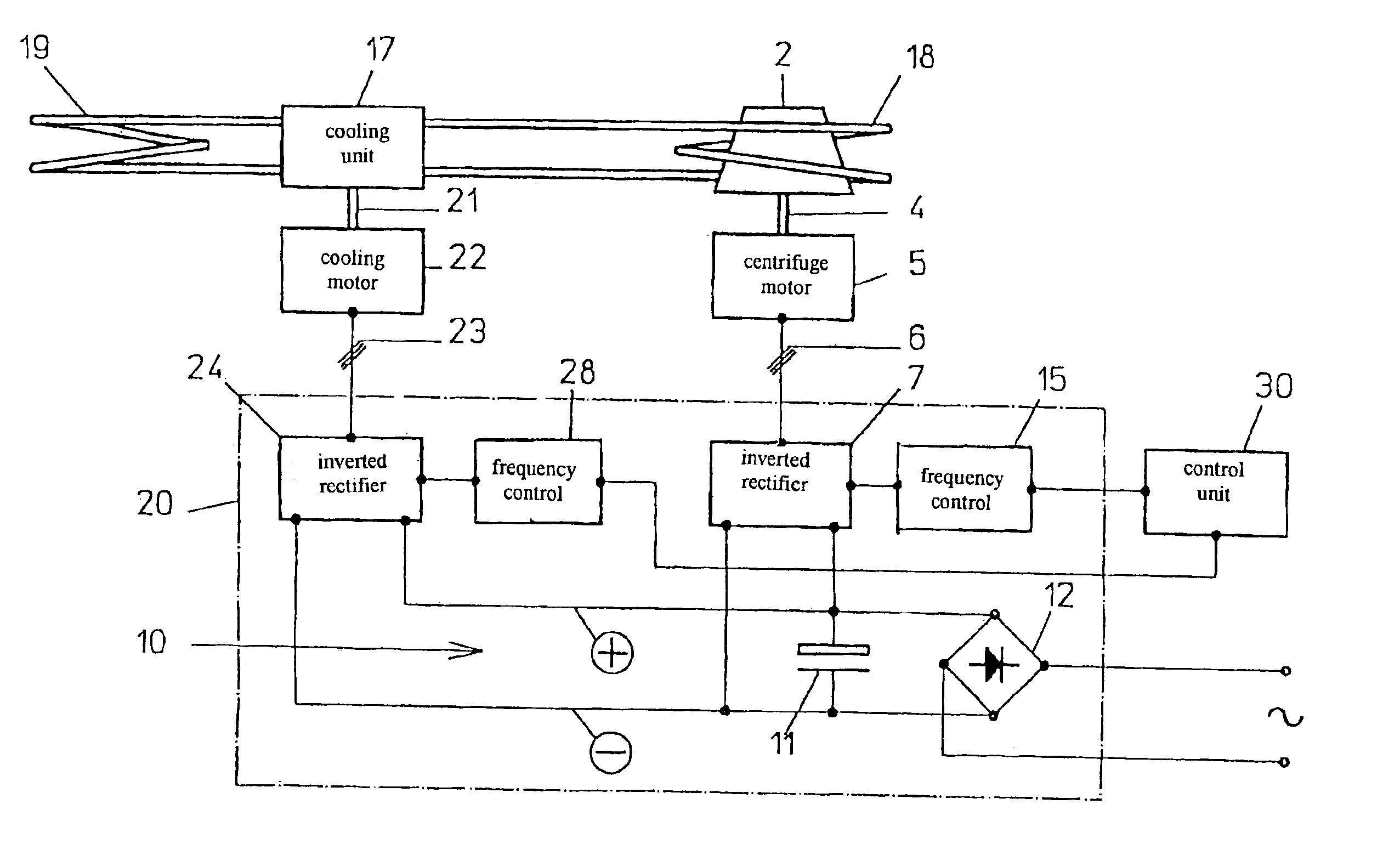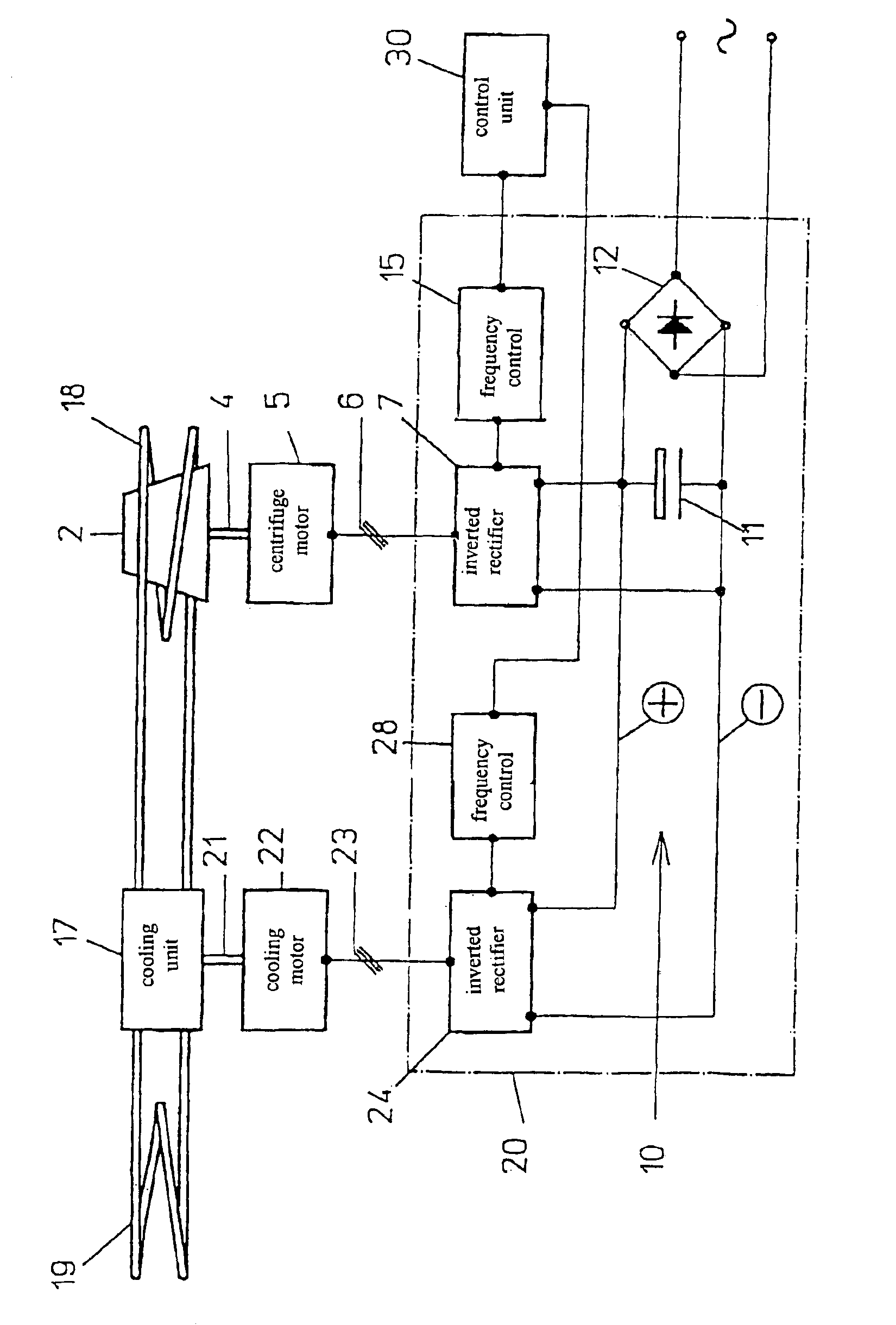Laboratory centrifuge, comprising refrigeration unit
a technology of centrifuge and refrigeration unit, which is applied in the direction of centrifuges, refrigeration machines, refrigeration safety arrangements, etc., can solve the problems of increasing construction costs, increasing rotational speed and cooling power, and reducing construction costs, so as to simplify construction, improve cooling control, and simplify the effect of motor control
- Summary
- Abstract
- Description
- Claims
- Application Information
AI Technical Summary
Benefits of technology
Problems solved by technology
Method used
Image
Examples
Embodiment Construction
The centrifuge has a rotor 2 that has inwardly located seats (not shown) for a conventional centrifuge vessel. The rotor 2 is driven by a centrifuge motor 5 via a shaft 4. The motor 5 is formed as a three-phase induction motor.
The centrifuge motor 5 is fed from a centrifuge inverted rectifier 7 of a frequency converter 20 via three conductors 6. In the frequency converter 20, the centrifuge inverted rectifier 7 has its input conductors connected with plus and minus wires of a d.c. source 10.
The d.c. source 10 has, between the plus and minus wires, a conventional charging capacitor 11 and is fed from a mains power rectifier 12 that is connected by appropriate conductors with a.c. mains.
The centrifuge inverted rectifier 7 is connected to a frequency control 15 by control conductors. The frequency control feeds the frequency and voltage to the centrifuge inverter rectifier 7, with which the centrifuge motor 5 is controlled.
There is provided a cooling unit 17, in a very simplified repre...
PUM
 Login to View More
Login to View More Abstract
Description
Claims
Application Information
 Login to View More
Login to View More - R&D
- Intellectual Property
- Life Sciences
- Materials
- Tech Scout
- Unparalleled Data Quality
- Higher Quality Content
- 60% Fewer Hallucinations
Browse by: Latest US Patents, China's latest patents, Technical Efficacy Thesaurus, Application Domain, Technology Topic, Popular Technical Reports.
© 2025 PatSnap. All rights reserved.Legal|Privacy policy|Modern Slavery Act Transparency Statement|Sitemap|About US| Contact US: help@patsnap.com


